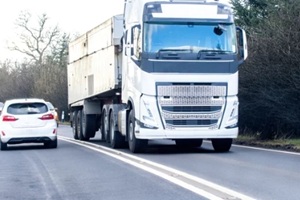
Trucking insurance is required for businesses to operate legally. Beyond the issue of compliance, every trucking business owner knows the value of insurance in protecting their vehicles and drivers from costly liabilities.
This article discusses the top factors that affect trucking insurance costs for modern businesses, including how businesses can control them to lower their premiums. Experienced local insurance agents further help businesses save on monthly coverage without sacrificing the protections they need.
1. Deductible Amount
The deductible amount substantially influences trucking insurance costs, since policies with higher deductibles are less risky for insurers. Businesses can pay lower monthly premiums in exchange for higher out-of-pocket costs in the event of an accident.
The reverse is also true, as lower deductibles place more of the burden of risk on the insurer, resulting in higher premiums. Trucking businesses can control their insurance costs while maintaining the same coverage limits simply by raising their deductible, provided they are aware that this increases their responsibility in the event of an accident.
2. Cargo Type and Value
According to the FMCSA, different types of cargo require different liability limits, which lead to differing trucking insurance costs. For example, freight requires a limit of $750,000 to $5,000,000, depending on the type of commodity being transported. For non-hazardous freight in vehicles weighing under 10,001 pounds, the minimum limit is $300,000.
Many trucking companies transport hazardous freight, such as chemicals, oil products, and other flammable materials, which raise the cost of insurance due to the comparatively high cost of an accident involving this cargo. Additionally, transporting passengers requires separate coverage with liability limits of $1,500,000 to $5,000,000, depending on the number of passengers and other factors.
In addition, the FMCSA requires cargo insurance of $5,000 per vehicle, as well as other coverages. Visit their website to learn more about trucking insurance requirements and how they impact a business’s trucking insurance costs.
3. Driving Record
Insurance adjusters evaluate the driving records of the business’s employees and the business’s overall record when setting premiums. They may review the company’s history as far back as 3-5 years to find accidents, past insurance claims, and other violations. These incidents raise insurance premiums by increasing the insurance company’s internal risk assessment of the trucking business.

Businesses can mitigate this risk by keeping a clean driving record, which helps them qualify for low-cost trucking insurance. This includes employing experienced drivers with fewer accidents and traffic violations. Companies can imitate insurers by checking their drivers’ history for 3-5 years to focus their hiring process on drivers with two or fewer minor violations.
4. Route Differences
Insurance companies assess their prospective clients’ driving routes and add their conclusions to their risk profile. Routes with heavy traffic, high accident rates, or a high frequency of bad weather can raise the costs of trucking insurance.
Businesses can control these costs by routing their drivers away from high-density population centers such as Chicago whenever possible. Updating safety procedures for inclement weather and shortening routes can also improve a business’s risk profile.
5. Safety Policies
A trucking company’s safety policies can influence its insurance costs. Insurance adjusters evaluate safety workflows and equipment to determine the trucking business’s overall safety profile. Higher-risk businesses may fail to qualify for low-cost insurance, while businesses committed to safety may be viewed as more secure investments.
For example, investing in additional driver safety training can reduce insurance rates. Purchasing additional safety measures for the vehicles can also help, including security cameras, collision cameras, and even first aid kits. Any investment in a safer work environment can potentially mitigate the cost of a low safety rating with an insurer.
6. Provider Policies
Even with identical workflows, different providers may assess businesses for different insurance premiums. Trucking businesses can reduce this risk by shopping between providers for their policies and exploring options such as bundling and fleet discounts.

Insurance premiums are not the only costs that businesses can control. Administrative costs dealing with insurance workflows can add up, especially for businesses with large fleets. Switching providers or bundling multiple policies through one provider can save businesses on these costs by saving time and money on their insurance management process.
Contact Pro Insurance Group to Control Trucking Insurance Costs While Maintaining Coverage
At Pro Insurance Group, our experienced local agents help trucking businesses maintain insurance coverage while controlling costs. Despite these cost-cutting measures, trucking businesses must maintain minimum liability coverage for their drivers, cargo, and vehicles, including additional protections specific to their business.
Contact our team today to schedule a consultation and learn how to control trucking insurance premiums while maintaining comprehensive coverage for your business.
